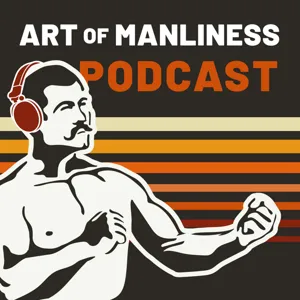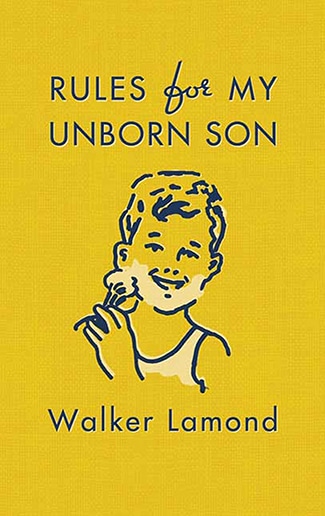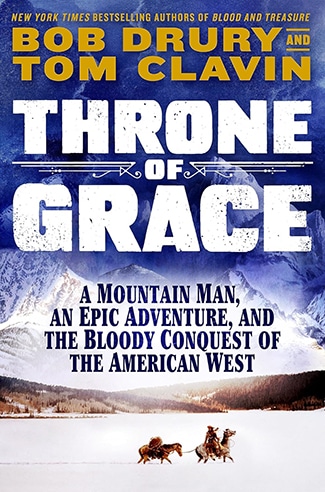Podcast Summary
The OSS: Pioneering Espionage and Intelligence Gathering during WWII: The Office of Strategic Services (OSS) revolutionized espionage and intelligence gathering during WWII by centralizing efforts and developing innovative spy tech, such as bat bombs and truth serums.
The Office of Strategic Services (OSS) during World War II was a trailblazer in the realm of espionage and intelligence gathering, paving the way for the establishment of the CIA. Before World War II, the US lacked a centralized intelligence agency for espionage, with various military branches and domestic agencies each having their own intelligence divisions. This led to bureaucratic infighting and duplication of research. To address these issues, President Roosevelt created the OSS in 1942, which centralized intelligence efforts and spearheaded the development of innovative spy tech, including bat bombs, radioactive foxes, and truth serums. The OSS's Dirty Tricks Department, led by a group of scientists, pushed the boundaries of what was possible in the realm of espionage, contributing significantly to the Allies' victory in the war. John Lyle, in his book "The Dirty Tricks Department," delves into the fascinating history of the OSS and the individuals behind these groundbreaking inventions.
Creation of the Office of Strategic Services during WWII: William Donovan led the establishment of the OSS, a centralized intelligence organization during WWII, facing criticism for aristocratic recruitment and unconventional leadership, but also introducing a research and development branch for clandestine warfare technology.
During World War II, the need for effective intelligence gathering led to the creation of the Office of Strategic Services (OSS), a centralized intelligence organization. This was spearheaded by William Donovan, a soldier and Medal of Honor recipient who realized the importance of staying informed about global developments. However, the OSS faced criticism and competition, particularly from the military, due to its perceived aristocratic recruitment practices and unconventional leadership style. Despite these challenges, Donovan also established a research and development branch within the OSS, led by chemist Stanley Lovell, to explore technology for clandestine warfare. This branch aimed to reduce bureaucratic infighting, but instead, it sometimes contributed to it by adding another organization competing for funds. Nonetheless, the OSS played a significant role in intelligence gathering and paved the way for modern intelligence agencies.
The Conflict between Morality and Espionage in Stanley Levenson's Story: Chemist Stanley Levenson faced moral dilemmas when joining the OSS to develop spy weapons, but came to view biological and chemical warfare as the ethical alternative to conventional warfare due to potential for reducing overall suffering.
Stanley Levenson, a brilliant chemist, struggled with moral dilemmas when he joined the OSS during World War II to develop spy weapons. Initially reluctant due to his Hippocratic obligation and patriotic feelings, he faced opposition from OSS head William Donovan who urged him to put aside his reservations for the greater good. The tension between the allure of using cunning to defeat enemies and the moral ambiguity of causing harm covertly is a long-standing conflict in espionage and warfare. Levenson's perspective evolved, and he began to view biological and chemical warfare as the ethical alternative to conventional warfare, sparing soldiers from physical wounds and potentially reducing overall suffering. Despite objections, his belief was that ending the war as soon as possible with minimal suffering was a worthy goal.
Experimental Approach to R&D in OSS during WWII: The OSS's 'ask for forgiveness, not for permission' mentality during WWII led to the development of innovative weapons like the silenced 22 pistol and time pencils, as well as effective and enduring ones such as the limpet mine, through a culture of secrecy, plausible deniability, and risk-taking.
During World War II, the Office of Strategic Services (OSS) employed a fast-paced, experimental approach to research and development, with a focus on trying out new ideas and discarding those that didn't work. This "ask for forgiveness, not for permission" mentality, driven by General Donovan, allowed the OSS to operate with minimal bureaucratic red tape and develop innovative weapons and gadgets, such as the silenced 22 pistol and time pencils, which were used for assassinations and explosives respectively. The culture of secrecy within the intelligence community enabled this risky behavior, creating a vicious cycle of secrecy, plausible deniability, and further risk-taking. Some of the most successful and longest-lasting weapons developed by the OSS were the simplest, like the time pencil and limpet mine. For example, the limpet mine, an explosive charge attached to the bottom of a ship, could be detonated using a time pencil, allowing for covert attacks on enemy vessels. Overall, the OSS's approach to research and development during World War II was characterized by its agility, creativity, and willingness to take risks, leading to the development of some of the most effective and enduring weapons of the time.
OSS's Unconventional Sabotage Methods During WWII: The OSS used disguised explosives, trains derailment devices, bat bombs, and radioactive foxes to sabotage the German military and support resistance movements during WWII.
During World War II, the Office of Strategic Services (OSS) used unconventional methods to sabotage the German military and support resistance movements in Europe. One of their most intriguing projects involved developing explosive pancake mix under the brand name Aunt Jemima. This allowed them to sneak explosives into enemy territories disguised as food. The OSS also created various other devices for sabotage, such as the "mole," which was a time-sensitive explosive placed on German train wheel wells to derail trains and block tunnels. Another unusual idea was the "bat bomb," which involved attaching incendiary devices to bats and releasing them over Japan to cause fires and chaos. Another project, "Operation Fantasia," aimed to use radioactively painted foxes to create psychological fear and potentially end the war by making Japanese civilians believe they were seeing portents of doom. While many of these ideas did not come to fruition, they demonstrate the innovative and unconventional approaches taken by the OSS during wartime.
Unconventional Warfare: Glow-in-the-dark Foxes and Assassination Methods: During WWII, the OSS researched unconventional methods for warfare including painting glow-in-the-dark foxes for psychological warfare and developing assassination methods that appeared natural, such as sodium metal capsules and truth serums. However, none were used in combat.
During World War II, the Office of Strategic Services (OSS) explored various unconventional methods for use in warfare. Two intriguing projects included painting glow-in-the-dark foxes for psychological warfare and developing methods for assassinations that appeared as natural causes. In the former, the OSS discovered that foxes could swim but lost most of their paint by the time they reached shore. The idea was that this would scare the Japanese even more than Americans. However, neither the "ghost foxes" nor the "bat bomb" were ever used. In the latter, the OSS researched creating capsules filled with sodium metal to cause death, which would then dissolve into salt, making it difficult to trace. They also considered artificially raising body temperature or injecting air embolisms. While some methods, like L pills, were used, the OSS also experimented with truth serums, specifically THC acetate, the main psychoactive ingredient in marijuana, to extract information from prisoners. However, the effectiveness of these methods remains uncertain. Overall, the OSS's unconventional research showcases the lengths to which military intelligence agencies were willing to go during wartime.
OSS's Exploration of Truth Drugs and Disinformation Campaigns During WWII: The OSS employed truth drugs and disinformation tactics during WWII, with uncertain results and ethical implications, setting a precedent for future intelligence agencies.
During World War II, the Office of Strategic Services (OSS) explored various methods for extracting information from individuals, including the use of truth drugs and disinformation campaigns. While the use of truth drugs, such as THC acetate and alcohol, led to increased talkativeness, it was impossible to guarantee the truthfulness of the information obtained. The OSS also experimented with disinformation campaigns, like the "Lonely League of War Women," which involved dropping pamphlets over enemy territory to spread false information. Despite the potential illegality and ethical concerns surrounding these methods, the wartime context seemed to justify such actions. However, the use of these techniques would continue into the post-war era, leading to controversies and abuses of power within organizations like the CIA.
Manipulating Enemy Morale: OSS Forgeries and Psychological Operations: During WWII, OSS employed intricate tactics like forgeries and psychological ops to manipulate enemy morale and support undercover agents. They produced convincing fake documents and used pamphlets to disrupt soldiers' focus.
The OSS employed creative and intricate tactics to manipulate enemy morale and support their undercover agents during World War II. They produced convincing forgeries, including fake passports, money, and ration tickets, to ensure their agents had authentic covers. Additionally, they used psychological operations, such as the League of Lonely War Women pamphlets, to disrupt German soldiers' focus and potentially discourage them from fighting. Jim the Pinman, a hired criminal expert in forgery, even trained agents on signature and handwriting forgery techniques. These efforts underscored the OSS's commitment to detail and innovation in their espionage work.
OSS disguises and hand-to-hand combat training: The OSS employed various disguises and hand-to-hand combat techniques to help agents blend in and remain undetected during missions, with gutter fighting, a Shanghai street style, being particularly effective.
The Office of Strategic Services (OSS) used various methods to help their undercover agents blend in and remain undetected during their missions. These methods ranged from simple disguises like putting iodine on teeth to make them yellow or stuffing shoes with newspaper to make them taller, to more complex disguises like facial reconstruction surgery or using message-concealing gadgets such as lipstick with hidden messages or pencils with secret chambers. The OSS also focused on hand-to-hand combat training, with William Fairbairn's Shanghai street fighting style, known as gutter fighting, being particularly effective. Gutter fighting had no rules and encouraged agents to use any means necessary to incapacitate their opponents. Fairbairn's innovative techniques, which included chin jabs and grabbing testicles, made him a crowd pleaser and an effective trainer for OSS agents.
The Legacy of the OSS's R&D Branch in the CIA: The OSS's R&D branch contributed to the CIA's formation and inspired its early operations, including the creation of the Technical Services Staff and the development of the MKUltra mind control program.
The Office of Strategic Services (OSS) and its Research and Development (R&D) branch played a significant role in the war effort during World War II, particularly by supplying resistance forces with sabotage tools and gathering intelligence. However, after the war, the OSS was largely disbanded due to criticism from military intelligence. The ethos of the R&D branch, including its experimentation with truth drugs and gadgets, carried over to the Central Intelligence Agency (CIA) when it was formed in 1947. This led to the creation of the Technical Services Staff and inspired the development of the MKUltra mind control program in 1953, which was heavily influenced by the OSS's wartime research. Despite the controversy surrounding MKUltra, the legacy of the OSS's R&D branch can be seen in the early days of the CIA's operations.
Secret Experiments with Psychoactive Drugs during the Cold War: During the Cold War, both the OSS and CIA conducted secret experiments using psychoactive drugs like LSD and THC on unsuspecting individuals, with some of the same individuals involved in both programs, raising ethical concerns.
During the Cold War era, both the Office of Strategic Services (OSS) and the Central Intelligence Agency (CIA) conducted secret experiments involving the use of psychoactive drugs like LSD and THC on unsuspecting individuals. These experiments were not isolated incidents, but rather part of larger programs, with some of the same individuals involved in both. For instance, George White, a narcotics officer hired by the OSS for THC experiments, was later hired by Sydney Gottlieb for MKUltra to administer LSD. These actions, which some may view as morally questionable, were carried out during peacetime, raising ethical concerns. If you're interested in learning more about John Lyle's work on this topic, follow him on Twitter @JohnLisle or visit his website johnlylehistorian.com.












